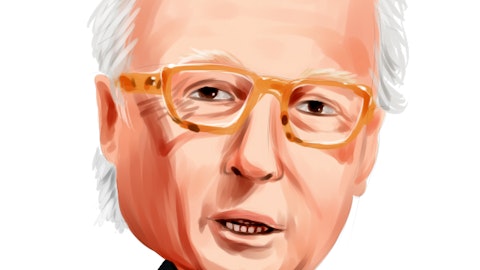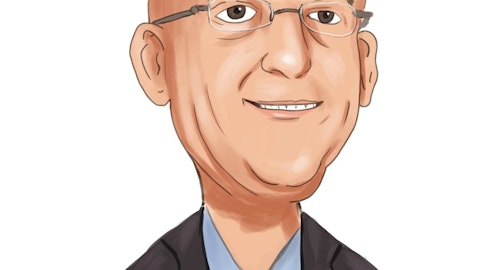Andrew Masterman: Yes, pretty much the industry itself has shifted. I mean they see – the competitive nature of the market. They have their own – they’re not immune to the cost inflation than we are. So I think customers are accepting kind of our shortened lead times. Competition has also adjusted their lead times. So kind of more of a normal industry practice now is going to be a shorter window for quoting until we see some type of long-term shift in stability in material rates.
Sam Kusswurm: Great, that’s helpful. Maybe switching gears a little bit here then. I think you mentioned last quarter, a majority of your customers have accepted the fuel surcharges, but you remain thoughtful about the rollout and absorbing some costs yourself. Can you update us on this process? Have additional customers come on board to this – to the rollout? And then are the fuel surcharges prefixed or are you able to put some variability into these agreements?
Andrew Masterman: Yes, fuel surcharge negotiations continued throughout the entire year of fiscal ’22. As we now go into fiscal ’23, what’s happening with fuel surcharges, is actually we’re shifting a surcharge into our pricing structures, right. And so that will manifest itself as we get into the green season in the May, June timeframe – and we’re basing right now our pricing structures based on approximately current levels of roughly $4 gas. So as we forecast out there that kind of $4 level, that’s where our pricing will be, and we’ll be removing fuel surcharges as we embed that current level of fuel in our contracts.
Sam Kusswurm: Appreciate it that’s helpful color. I’ll leave there, thanks.
Andrew Masterman: Thank you.
Operator: Thank you The next question today comes from the line of Bob Labick from CJS Securities. Please go ahead, your line is now open.
Peter Lukas: Yes, hi good morning, it’s Pete Lukas for Bob. Just in terms of the maintenance services revenue growth, how much of that would you say was due to price increases?
Andrew Masterman: Yes, hi Pete, you look at net-net-net, it’s about a 50 bps growth on overall maintenance due to price. When I say net-net-net that means we have price increases and we have scope adjustments. So actually price increases were higher. If we have, and I’ll say, roughly 5% price increase, it means we have roughly 4.5% of scope adjustments. Both of them positively impacting margin, but ultimately resulting in only about a 50 bps top line benefit.
Peter Lukas: Great. And then shifting over to ancillary services, I know you mentioned the impact of the hurricane, but maybe if you could talk kind of ex that, would you say it’s back to pre-pandemic level on an account basis? And what were the drivers of the ancillary per account be right now and any trends you’re seeing there?
Andrew Masterman: Sure, our contract maintenance and the contract part of the maintenance business rebounded very quickly off of pandemic. And so, we feel that, that actually came back to more of a normalized level early in ’22 if not the end of ’21. The ancillary services we have now are back – very strong at pre-pandemic levels for in a normalized state. And actually, when you see the hurricane coming in, that’s going to only benefit that’s going to be plus. That’s going to be above historical ancillary services. And really, when it comes down to – it come back to a more normalized environment. When you go to hotel you’re expecting to see different levels of ancillary power changes, things like that. When you go into homeowners associations and people are going to be there, you’re going to be expecting a relatively tight look.



